In a nutshell, upholstery is attaching foam or feather cushioning to furniture frames and covering with fabric. The padding is what provides the comfort and is not visible, the magic of the fabric choice is what provides the aesthetics of the piece of furniture. All types of furniture can be upholstered, from dining chairs to sofas and from ottomans to footstools.
Professional upholstery services are an art and a science at the same time. It is a skill that takes years to master, there are many techniques with stitching, buttoning, and piping which are all methods used to hold the fabric in place and attach it to the furniture frame. These also provide aesthetic detail to the finished piece of furniture.
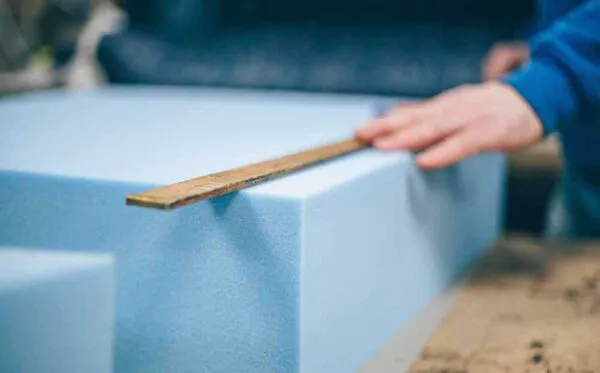
Furniture upholstery most often incorporates either foam or feather fillings and padding to provide comfort, support, and structure. The choice of filling and padding materials depends on the type of furniture, its intended use, and the desired level of comfort. Sometimes furniture can even require bespoke upholstery. Here are all the different types that can be used:
Foam is one of the most popular choices for cushioning and padding in upholstery. It comes in various densities and thicknesses, allowing for customization based on comfort and durability requirements. Common types of foam include polyurethane foam and memory foam.
High-density foam is a firmer type of foam often used in seating cushions to provide both support and comfort. It’s suitable for furniture that needs more structure.
Down and feather fillings are luxurious and provide a soft and comfortable cushioning. They are often used in high-end furniture and pillows.
Polyester fibrefill is often used for softer, plush cushions. It provides a comfortable, fluffy feel and is commonly used in pillows and back cushions.
Cotton batting is a natural padding material that can add a soft layer between the fabric cover and the foam or other support. It’s commonly used in quilting and provides a traditional, cozy feel.
Dacron is a synthetic fibre often used in upholstery as a wrap or protective layer for foam cushions. It helps maintain the shape and adds a bit of extra plump.
Traditionally used in antique and high-quality furniture, horsehair is a natural filling that provides excellent support and durability. This is not used very often these days!
Coil springs are used in the seats of some upholstered furniture for added support and comfort. They are often encased in foam or batting.
This is another traditional upholstery material that offers support and bounce. It is derived from animal hair and is often used in antique restoration.
The choice of filling and padding material depends on factors like the type of furniture, the expected level of use, and personal preferences for comfort and style. Upholsterers can layer these materials to achieve the desired level of comfort, shape, and support in the finished piece of furniture.
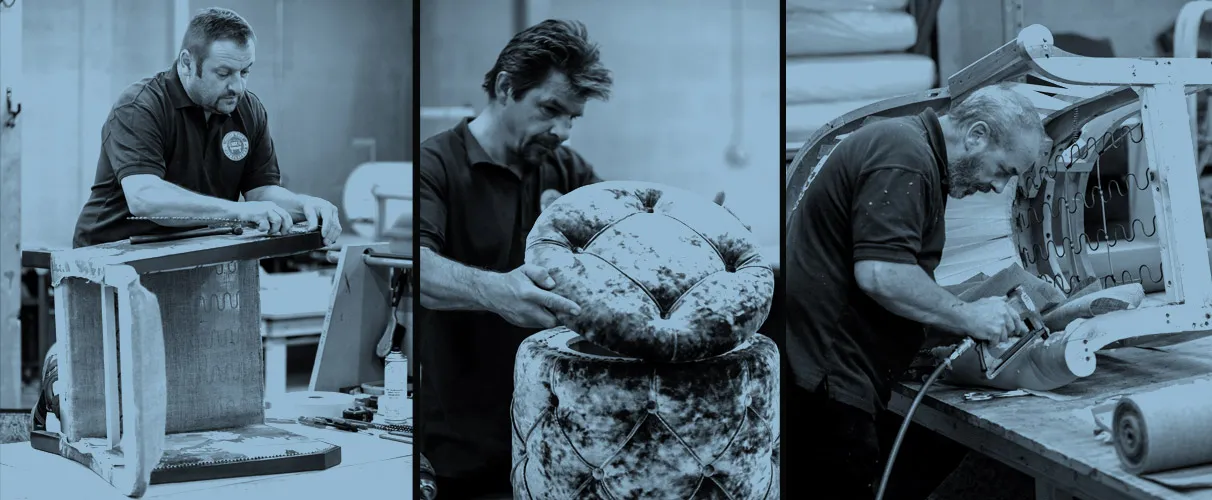
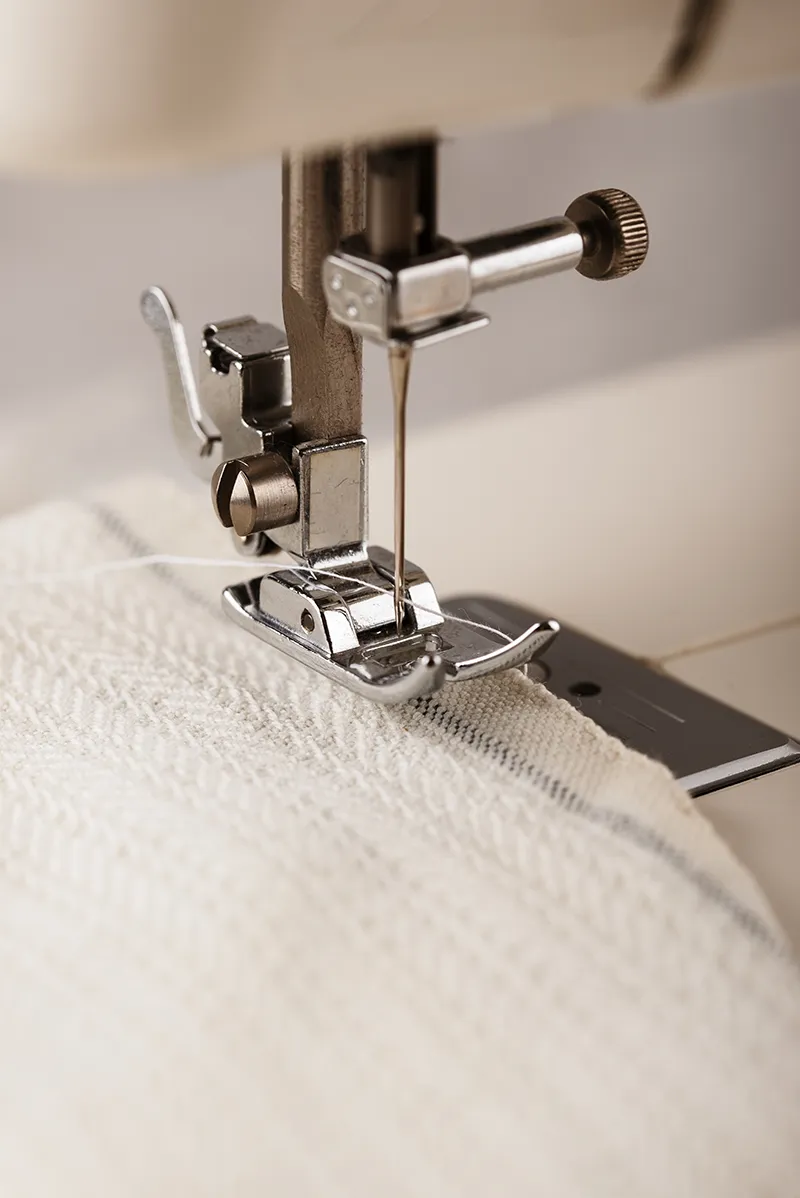
There are many stitching techniques used to join fabric, leather, or other materials to create or repair furniture. Some common types of stitching used in upholstery include:
This is the basic stitch used for joining two pieces of fabric. It can be done by hand or with a sewing machine and is often used for seams and hems.
Topstitching is a visible stitch used on the outside of a fabric to secure seams and add decorative detail. It’s often done with a heavier thread for a contrasting or decorative effect.
Also known as a slip stitch, this stitch is used to close seams or hems from the outside while keeping the stitching hidden on the inside. It creates an almost invisible seam.
Overcast stitches are used to finish raw edges and prevent fraying in upholstery fabric. This can be done by hand or with a serger sewing machine.
Zigzag stitching is used to join fabrics that have some stretch or for reinforcing seams. It helps prevent fraying and provides flexibility.
Welt cord is a decorative and functional element in upholstery, used to create borders, edges, and seams. It involves stitching a fabric strip around a cord or rope.
A box stitch is a reinforcement technique used to secure corners and prevent wear and tear, often seen in cushion covers and upholstery corners.
Button tufting involves stitching buttons through layers of fabric and padding to create a classic upholstered look with dimples or tufts.
Ladder stitching is used to join two folded edges of fabric invisibly, often used in cushion covers and pillows.
These stitches are used to secure decorative elements like tacks, nail heads, or brads in upholstery, providing both aesthetic appeal and stability.
Used in traditional upholstery, this stitch secures sinuous or serpentine springs to the frame, creating the support structure for upholstered seats.
Hand stitching is often used in custom or antique upholstery work, including techniques like the saddle stitch, baseball stitch, and blanket stitch.
Each of these stitching techniques serves a specific purpose in upholstery, depending on the type of project, fabric, and desired finished look. Skilled upholsterers use a combination of these stitching methods to achieve both functional and aesthetic results in their work.
The fabric choices these days for upholstery are vast; this is the exciting part of re-upholstering furniture as it is where the creativity and design flare can really make the piece come to life.
Here are all the natural types of upholstery fabrics:
Cotton is a natural fibre that is breathable, comfortable, and easy to clean. It’s a popular choice for casual furniture. However, it can wrinkle and may not be as durable as some other options.
Linen is another natural fibre known for its breathability and natural texture. It can give a relaxed, airy feel to furniture but can also wrinkle easily.
Velvet is a luxurious, plush fabric known for its softness and rich appearance. It adds an elegant and opulent touch to furniture. Silk velvet is a natural fabric and is easily one of the most expensive fabrics made. Linen velvet absorbs dye very well
Leather is a premium choice for upholstery due to its durability, natural beauty, and timeless appeal. It’s available in various types, including full-grain, top-grain, and bonded leather.
Suede is a soft, napped leather often used for a comfortable, textured look on furniture. It will require more care and wouldn’t be recommended for commercial furniture.
Chenille is a textured fabric with a ‘fuzzy’ appearance, and it’s both durable and comfortable. It’s often used for traditional or cozy furniture. It is mostly made from cotton but can also be made using acrylic. ‘Chenille’ is the French word for Caterpillar.
Bouclé is a textured, looped fabric that creates a unique, cozy appearance. It’s often seen in mid-century modern and contemporary designs. First created in 1948 by Eero Saarinen, a furniture designer, who used it on his iconic ‘womb chair’ to add extra comfort to his design.
Silk is a luxurious, smooth fabric that adds a touch of elegance to furniture. It is a natural protein fibre created from moth larvae – About 3,000 cocoons are used to make one yard of silk! However, it’s very delicate and would not be suitable for high-traffic areas.
Wool comes from sheep and therefor a natural fibre known for its warmth and resilience. It’s less common in upholstery but can be used for a cozy and durable feel.
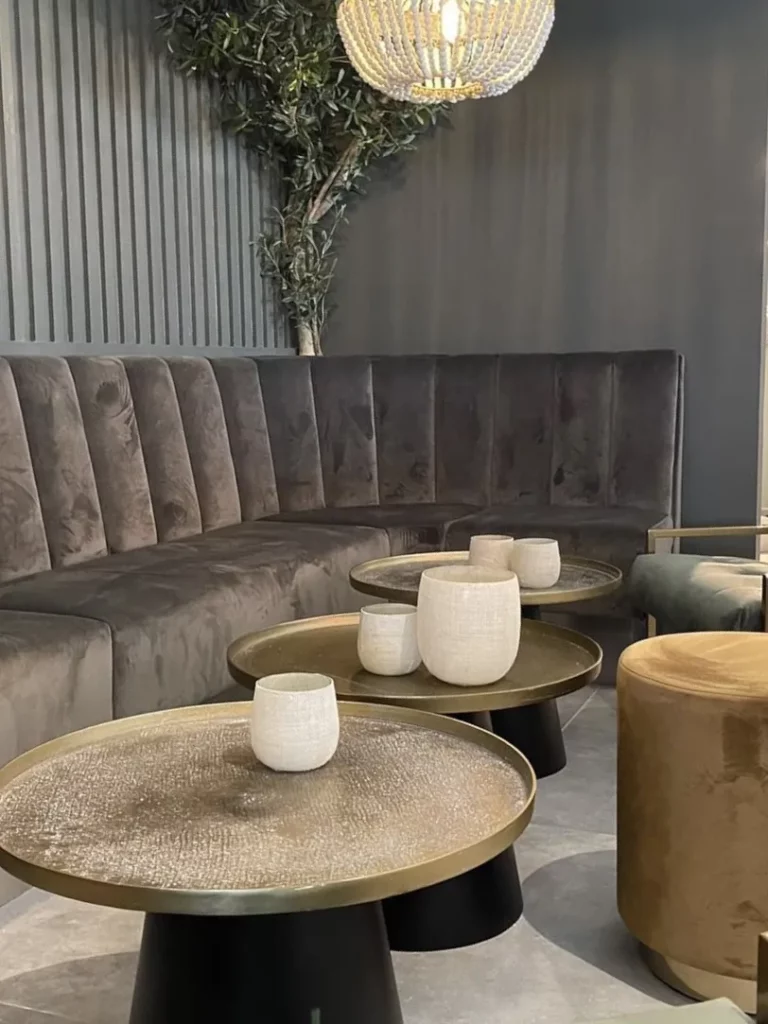
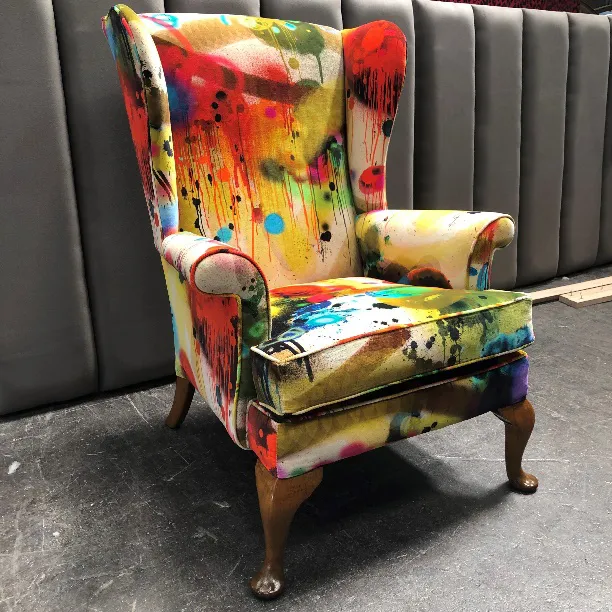
Polyester is a synthetic fibre known for its durability and resistance to stains and fading. It’s a practical choice for high-traffic areas and can mimic the look of natural fibres.
Ryon or Nylon Velvet is a much cheaper version of the natural velvets that are available. It is lightweight and drapes very well making it a good choice for upholstery. It is much easier to maintain and clean too which makes it a lot more practical.
PU Leather is an excellent alternative to real leather; it is much more affordable and easier to clean and maintain. There is a wide range of colours available, a very popular choice for office upholstery or sometimes commercial seating including pub, clubs & restaurants.
Here at Southwest Upholstery, we have years of experience with furniture upholstery for any project. From single pieces of furniture through to seating for restaurants, bars and clubs. Our specialist team will take you through the whole process, advising and guiding you until you get exactly the look and feel you want.